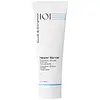What's inside
What's inside
 Key Ingredients
Key Ingredients

 Benefits
Benefits

 Concerns
Concerns

 Ingredients Side-by-side
Ingredients Side-by-side

Water
Skin ConditioningSqualane
EmollientGlycerin
HumectantDicaprylyl Carbonate
EmollientJojoba Oil/Macadamia Seed Oil Esters
Skin ConditioningPolyglyceryl-3 Methylglucose Distearate
EmulsifyingButylene Glycol
HumectantCetearyl Alcohol
EmollientHydroxyethyl Acrylate/Sodium Acryloyldimethyl Taurate Copolymer
Emulsion StabilisingSimmondsia Chinensis Seed Oil
EmollientSaccharide Isomerate
HumectantCamellia Sinensis Leaf Extract
AntimicrobialBisabolol
MaskingAllantoin
Skin ConditioningCeramide Ng
Skin ConditioningSqualene
EmollientPhytosteryl Macadamiate
Skin ConditioningPhytosterols
Skin ConditioningTocopherol
AntioxidantTocopheryl Acetate
AntioxidantCitric Acid
BufferingSodium Citrate
BufferingEthylhexylglycerin
Skin ConditioningPhenoxyethanol
PreservativeWater, Squalane, Glycerin, Dicaprylyl Carbonate, Jojoba Oil/Macadamia Seed Oil Esters, Polyglyceryl-3 Methylglucose Distearate, Butylene Glycol, Cetearyl Alcohol, Hydroxyethyl Acrylate/Sodium Acryloyldimethyl Taurate Copolymer, Simmondsia Chinensis Seed Oil, Saccharide Isomerate, Camellia Sinensis Leaf Extract, Bisabolol, Allantoin, Ceramide Ng, Squalene, Phytosteryl Macadamiate, Phytosterols, Tocopherol, Tocopheryl Acetate, Citric Acid, Sodium Citrate, Ethylhexylglycerin, Phenoxyethanol
Water
Skin ConditioningCetearyl Ethylhexanoate
EmollientCetearyl Isononanoate
EmollientButyrospermum Parkii Butter
Skin ConditioningDiglycerin
HumectantButylene Glycol
HumectantGlycerin
HumectantPolymethyl Methacrylate
Propylheptyl Caprylate
EmollientPtfe
Tapioca Starch
Cetyl Alcohol
EmollientPentaerythrityl Distearate
EmulsifyingSteareth-2
EmulsifyingSteareth-21
CleansingMethicone
EmollientPhenoxyethanol
PreservativeBrassica Campestris Sterols
EmollientGlyceryl Stearate
EmollientPEG-100 Stearate
Rubus Idaeus Seed Oil
EmollientSodium Polyacrylate
AbsorbentCI 77891
Cosmetic ColorantMica
Cosmetic ColorantAcrylates Copolymer
Tocopheryl Acetate
AntioxidantXanthan Gum
EmulsifyingPanax Ginseng Root Extract
EmollientBiosaccharide Gum-1
HumectantAsiaticoside
AntioxidantPhytosphingosine
Skin ConditioningSorbitol
HumectantMaltodextrin
AbsorbentPolymethylsilsesquioxane
Ascophyllum Nodosum
Skin ConditioningSus Extract
Skin ConditioningAsparagopsis Armata Extract
Skin ProtectingPotassium Sorbate
PreservativeSodium Hydroxide
BufferingWater, Cetearyl Ethylhexanoate, Cetearyl Isononanoate, Butyrospermum Parkii Butter, Diglycerin, Butylene Glycol, Glycerin, Polymethyl Methacrylate, Propylheptyl Caprylate, Ptfe, Tapioca Starch, Cetyl Alcohol, Pentaerythrityl Distearate, Steareth-2, Steareth-21, Methicone, Phenoxyethanol, Brassica Campestris Sterols, Glyceryl Stearate, PEG-100 Stearate, Rubus Idaeus Seed Oil, Sodium Polyacrylate, CI 77891, Mica, Acrylates Copolymer, Tocopheryl Acetate, Xanthan Gum, Panax Ginseng Root Extract, Biosaccharide Gum-1, Asiaticoside, Phytosphingosine, Sorbitol, Maltodextrin, Polymethylsilsesquioxane, Ascophyllum Nodosum, Sus Extract, Asparagopsis Armata Extract, Potassium Sorbate, Sodium Hydroxide
 Reviews
Reviews

Ingredients Explained
These ingredients are found in both products.
Ingredients higher up in an ingredient list are typically present in a larger amount.
Butylene Glycol (or BG) is used within cosmetic products for a few different reasons:
Overall, Butylene Glycol is a safe and well-rounded ingredient that works well with other ingredients.
Though this ingredient works well with most skin types, some people with sensitive skin may experience a reaction such as allergic rashes, closed comedones, or itchiness.
Learn more about Butylene GlycolGlycerin is already naturally found in your skin. It helps moisturize and protect your skin.
A study from 2016 found glycerin to be more effective as a humectant than AHAs and hyaluronic acid.
As a humectant, it helps the skin stay hydrated by pulling moisture to your skin. The low molecular weight of glycerin allows it to pull moisture into the deeper layers of your skin.
Hydrated skin improves your skin barrier; Your skin barrier helps protect against irritants and bacteria.
Glycerin has also been found to have antimicrobial and antiviral properties. Due to these properties, glycerin is often used in wound and burn treatments.
In cosmetics, glycerin is usually derived from plants such as soybean or palm. However, it can also be sourced from animals, such as tallow or animal fat.
This ingredient is organic, colorless, odorless, and non-toxic.
Glycerin is the name for this ingredient in American English. British English uses Glycerol/Glycerine.
Learn more about GlycerinPhenoxyethanol is a preservative that has germicide, antimicrobial, and aromatic properties. Studies show that phenoxyethanol can prevent microbial growth. By itself, it has a scent that is similar to that of a rose.
It's often used in formulations along with Caprylyl Glycol to preserve the shelf life of products.
Tocopheryl Acetate is AKA Vitamin E. It is an antioxidant and protects your skin from free radicals. Free radicals damage the skin by breaking down collagen.
One study found using Tocopheryl Acetate with Vitamin C decreased the number of sunburned cells.
Tocopheryl Acetate is commonly found in both skincare and dietary supplements.
Learn more about Tocopheryl AcetateWater. It's the most common cosmetic ingredient of all. You'll usually see it at the top of ingredient lists, meaning that it makes up the largest part of the product.
So why is it so popular? Water most often acts as a solvent - this means that it helps dissolve other ingredients into the formulation.
You'll also recognize water as that liquid we all need to stay alive. If you see this, drink a glass of water. Stay hydrated!
Learn more about Water